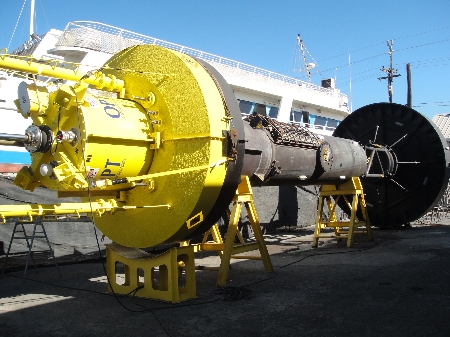Obama Wants To Cut Hydropower Funding
April 19, 2011
Hydropower advocates must be puzzled by President Obama’s plan to build a nation powered by clean energy.
As the Obama administration promotes an ambitious new goal to produce 80 percent of the nation’s energy from clean resources by 2035, Obama’s budget proposal for fiscal 2012 would slash funding for hydropower research and development by 21 percent.
Talk about irony.
Hydropower is the world’s largest and most reliable form of renewable power, and it deserves a strong presence in any comprehensive plan to generate more clean energy in the U.S. Cutting funding for hydropower research and development amid deepening concerns about climate change is a crime against common sense.
Improvements in turbine design and technology can significantly boost the capacity of existing hydro plants and help realize the power potential of America’s ocean waves, tides and river currents. What’s more, new information about the nation’s hydropower potential shows that 12,600 MW of renewable power capacity could be added to the grid by installing generation equipment at existing non-powered dams, according to a Department of Energy study released earlier this month.
 Advancements
in hydropower technology can go a long way in helping the
nation meet its clean energy goals.
Advancements
in hydropower technology can go a long way in helping the
nation meet its clean energy goals.
Under Obama’s budget proposal for fiscal 2012, funding for DOE’s Waterpower Program, which centers on the development and deployment of advanced waterpower technologies, would be reduced from $49 million to $39 million.
In a recent letter to lawmakers, the National Hydropower Association and the Ocean Renewable Energy Coalition said it will be hard to meet new goals for clean energy without increased support for hydropower.
“Those goals will be difficult, if not impossible, to reach unless there is strong, sustained support to realize the untapped growth potential from all waterpower resources,” the letter stated.
Both associations called on Congress to appropriate $100 million to DOE’s Waterpower Program and to split it equally between marine and hydrokinetic technologies and conventional hydro and pumped storage projects.
“Even as new studies document significant near-term and long-term growth opportunities, historically, the DOE Waterpower Program has been substantially underfunded,” the letter stated. “Though our organizations and members greatly appreciate the increase in funding that has occurred in recent years, the program remains the smallest of the renewable energy programs.”
Stay tuned. I’ll let you know how the story unfolds.
Russell Ray is senior editor of Hydro Review magazine. Russell has 11 years experience as an energy journalist, covering the oil and gas industry in Oklahoma and the growth of solar and nuclear power in Florida. He served eight years as the energy reporter for the Tulsa World. He held the same position at the Tampa Tribune for two and a half years before joining Hydro Review in 2009.
The information and views expressed in this blog post are solely those of the author and not necessarily those of RenewableEnergyWorld.com or the companies that advertise on this Web site and other publications. This blog was posted directly by the author and was not reviewed for accuracy, spelling or grammar.
COMMENT:
Advancements in hydropower technology as well as other renewable energy sources can help the nation meet its clean energy goals. Fossil fuels are not the answer. Combining all the different alternative energy sources together is the ultimate answer.
 To subscribe or visit go to:
http://www.renewableenergyaccess.com
To subscribe or visit go to:
http://www.renewableenergyaccess.com